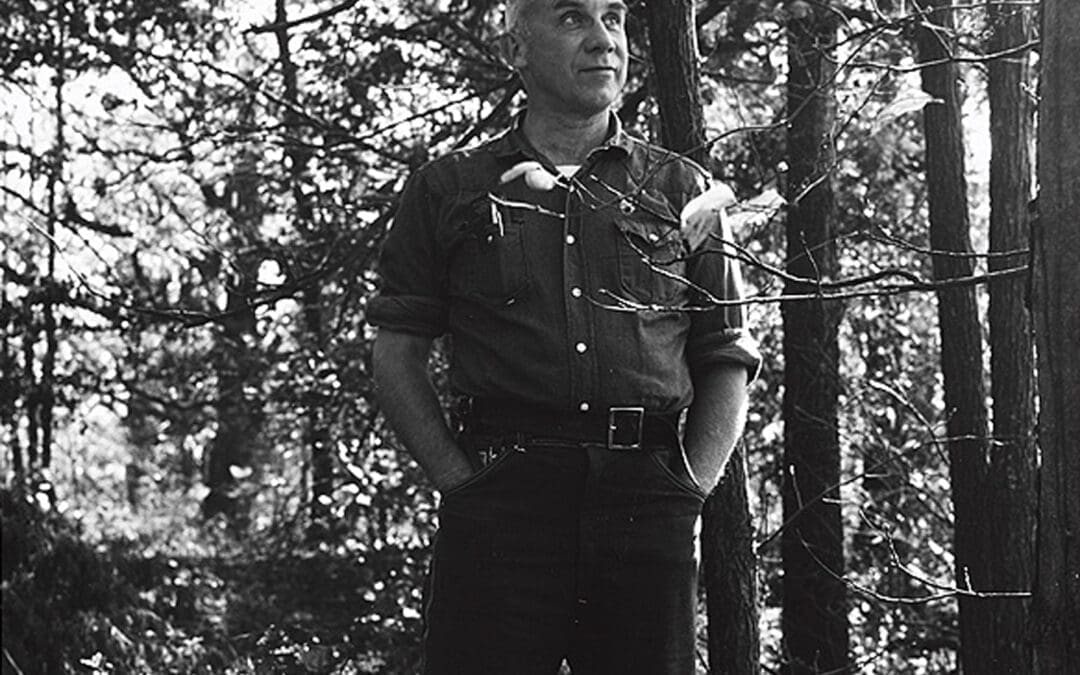As the film Babel came to a close, panning out from “Chieko” standing with her father on the balcony of their Tokyo apartment high rise to the audio backdrop of the beautifully orchestrated music of Ryuichi Sakamoto welling up, I could not move from my seat. I knew I had seen a great film. The beauty was overwhelming and the ending of the film seemed so full of hope. I had to sit and contemplate. Babel is a complex film, connecting stories from three continents, highlighting the consequences of the biblical story of language confusion at the tower of Babel. And yet the film provides a glimpse of the possibilities of true human connection despite our failures to speak and listen. Chieko and her father realize that they need each other. Life cannot be lived alone.
Great films tell stories that open up our imaginations and expand our thought worlds to new metaphors for living. This does not happen without prompting. I have found that this happens best in conversations with others. Recently, I saw the film Perfume: The Story of a Murderer. I could not stop from telling friends about this film. The conversations about how it works as a fable and alludes to Jesus and the meaning of the Eucharist had me thinking for days about the significance of the story. The more conversations, the more intriguing and the story became, and the more it resonated.
While I like a lot of old movies, especially the work of Alfred Hitchcock and Billy Wilder, the best films are not necessarily old. This past year saw quite a few great films on the big screen. I have chosen twenty-four films, with Babel and Perfume, I think are worth seeing.
One quality these films have in common is that they told a story that allowed for good conversations about who we are as human beings. The stories vary from comedies that help us laugh at ourselves to the dark stories of the tragic consequences of living life in particular ways.
Back to the future
Three films use the future as a way to engage questions of meaning in our time. Children of Men is set in a future where infertility has left society without hope and, therefore, in a violent and totalitarian state. When a pregnant woman is discovered, the adventure is in trying to get the woman to “The Human Project” where a real hope for the future can be realized. This is a great film that explores hope and how it motivates human action. The Fountain uses three stories, set 1000 years apart—past, present, and future. They all include the search for immortality and the denial of death, and they feature the same actors in each of the vignettes. It takes time to decipher this film, but eventually the viewer is confronted with the inevitable questions of death and our need to make sense of it. The sci-fi film, Sunshine, plots a futuristic space mission to restart the dying sun to explore human longing and search for significance. As the astronauts close in on the source of life on earth they come face to face with the power of life and death and grapple with deep questions about spirituality. The travellers experience life and the sunlight as an emotional faith experience. Their beliefs are tested. All three of these films construct elaborate imaginary worlds that ask the viewer to pose questions instead of seeking escape from the world in which they live.
History for today
“Biopics” creatively tell the story of a historical person and they provide the audience with a look into that person’s life and the cultural influences of a particular period. The Queen was one of the best biopics of this past year, telling the story of Queen Elizabeth II and the dynamics of her reaction to the death of Diana, Princess of Wales, in 1997. The film paints a personal portrait of the Queen and the struggle to find the connection between her family life and her public image. Another great biopic is the story of the abolitionist William Wilberforce in the film Amazing Grace. The film is named after the hymn penned by John Newton, a mentor of Wilberforce, whose conversion to Christianity saw him realize the evil in which he had taken part by commanding slave-trading ships. Not just a historical film, the film connects to our own times by illuminating the patience, integrity, and community that corrected political injustice. Finally, Becoming Jane is a good biopic about novelist Jane Austen. The film sets the context for her books and describes her influences and the world in which she wrote. Austen’s ability to describe the human condition in her work is highlighted in dialogue and the challenges she faced as a woman writer at the beginning of the 19th century.
Clint Eastwood directed two great films about World War II. Flags of our Fathers tells the story of three American marines who personified the war when a picture of their putting an American flag was circulated widely in the American press. Letters from Iwo Jima tells the story, from a Japanese perspective, of soldiers who are conflicted by their longings for family life and their duty to fight for country. Both films portray the harsh reality of war and personal and national loss suffered in it.
 Blood Diamond is another historical film that explores the violence in the diamond industry developed in Africa since colonization. It tells a moving story of a diamond worker, a mercenary, and a journalist who together try to understand their roles in fighting injustice both personally and publicly.
Blood Diamond is another historical film that explores the violence in the diamond industry developed in Africa since colonization. It tells a moving story of a diamond worker, a mercenary, and a journalist who together try to understand their roles in fighting injustice both personally and publicly.
Asking important questions
The documentaries Jesus Camp and Sicko are both powerful films. They ask the audience to think through critical questions about our current way of life. Jesus Camp tells the story of a summer youth camp where children are taught about spiritual warfare and evangelistic skills, and the connection between faith and conservative politics. While the filmmakers have been accused of portraying the camp as indoctrination, the film does more to ask how children are taught to connect faith and life. It is an interesting look at the current cultural conception of the relationship between faith and “the world.” Sicko is an investigation into the working of the U.S. health care system. While the director Michael Moore tends to get very political, here he makes a very educational and thought-provoking film. He focuses on the essential question of how the U.S. conceives of itself as a nation, and what seems to be a misguided health care system. He ends the film by pointing out how the health care system paradoxically works against Americans’ fundamental beliefs about who we are.
Laughing at ourselves

(Really) seeing ourselves
 Two Judd Apatow projects, Knocked Up and Superbad, were released this summer. As advertised, these are comedies with a lot of crude language and behaviour. But their themes are of people who are coming to terms with their need to mature. This makes the ending of each film poignant, as crudeness cuts to the heart of the issue. In Knocked Up, the characters are confronted with the consequences of their actions and with their moral responsibility that they either accept or avoid. Superbad chronicles the last days of two misguided high school friends who imitate the cultural mainstream’s view of sexuality. But when they come face to face with reality, they are utter failures at objectifying women. Again, the ending of the film is important, as the characters realize what true friendship is, and confront the failure of their culture to teach them how vital friendship is.
Two Judd Apatow projects, Knocked Up and Superbad, were released this summer. As advertised, these are comedies with a lot of crude language and behaviour. But their themes are of people who are coming to terms with their need to mature. This makes the ending of each film poignant, as crudeness cuts to the heart of the issue. In Knocked Up, the characters are confronted with the consequences of their actions and with their moral responsibility that they either accept or avoid. Superbad chronicles the last days of two misguided high school friends who imitate the cultural mainstream’s view of sexuality. But when they come face to face with reality, they are utter failures at objectifying women. Again, the ending of the film is important, as the characters realize what true friendship is, and confront the failure of their culture to teach them how vital friendship is.
Fragile: handling intimacy with care
Many films are made about human relationships, often those between men and women. These films hinge on great, personal dialogue. But their greatest strength is highlighting the brokenness that is a reality in all relationships and pointing out that hope, love, and redemption that are possible. Once is a low budget independent film, that tells the story of an Irish singer-songwriter and his unusually musical relationship with a Czech immigrant pianist. They form a bond over the creation of music. Glen Hansard of The Frames and Markéta Irglová wrote all but one of the songs and play the main characters in this beautiful film.
The Lives of Others is a German film set in East Germany before the fall of the Berlin Wall. “Gerd Wiesler,” a Stasi agent, is assigned to surveillance of a playwright and his wife, a well-known actress. Wiesler is on the look-out for subversive activity, but as he listens in he finds that he is more than just an objective observer. He identifies with the couple, and it tests his ability to do his job and hold on to compassion.
Breaking and Entering uses the metaphor of crime to explore how lying and cheating affect personal relationships, and the extent to which confession and forgiveness can bring about reconciliation. In a similar way, The Last Kiss shows the strain of doubt on relationship. Four good friends reconsider their choices as they enter into their thirties. Unsure of where their futures are, the weight of responsibility bears down on them. They are searching for wisdom which for Michael, the main character, comes in the form of his father-in-law who has gone there before him.
Black Snake Moan explores a very broken relationship between “Rae” and “Ronnie.” Ronnie leaves for the National Guard and Rae, suffering from abuse, relapses into sexual addiction. When she is left for dead in front of “Lazarus’s” isolated country home, he takes her in and tries to cure her. By Lazarus’s beautiful blues playing and his religious conviction, he is able to achieve a measure of normalcy and to bring some redemption to Ronnie and Rae’s broken relationship.
Responding to art
Disguised as a film for children, Ratatouille, the latest film from Pixar, tells the entertaining and fun story of “Remy,” a rat whose passion is to cook. By befriending “Linguini,” a kitchen assistant at a French restaurant, Remy accomplishes his dream. The film reaches its climax when the irascible food critic “Anton Ego” tastes the food and writes a moving review about the purposes of art, and how it changed his perspective of the purpose of his criticism. This thoughtful conclusion is a teaching moment about how our response to art shapes our lives.
Your Life as a Story
Finally, the films Bridge to Terabithia, Pan’s Labyrinth, and Stranger than Fiction are imaginative films that ask how to make sense of our own experiences.
 Bridge to Terabithia tells the story of “Jesse” and “Leslie.” Jesse loves art, but has a hard time fitting in at school. Leslie is a new neighbour who wins Jesse’s friendship by her appreciation of his artistic gifts. Soon, they spend all their time after school playing in the woods behind their homes. They imagine a fantastic world in which they must fight off evil intruders. The film does not use imagination as an escape from real life. Instead, they see worlds collide and issues of pain and death become real. The story illuminates the true value of imagination and the need for friendship.
Bridge to Terabithia tells the story of “Jesse” and “Leslie.” Jesse loves art, but has a hard time fitting in at school. Leslie is a new neighbour who wins Jesse’s friendship by her appreciation of his artistic gifts. Soon, they spend all their time after school playing in the woods behind their homes. They imagine a fantastic world in which they must fight off evil intruders. The film does not use imagination as an escape from real life. Instead, they see worlds collide and issues of pain and death become real. The story illuminates the true value of imagination and the need for friendship.
Pan’s Labyrinth also uses the fantastical imagination of young “Ofelia” as she tries to cope with the trauma and evil around her. Ofelia’s fantasy life allows her to understand her own life as a story and an adventure. This larger story that she is a part of allows her to find beauty and to do good amidst the brutal reality of war. This is a beautiful and honest film that uses fairy tales as allegory as in C. S. Lewis’s literature.
 My favourite film of the year though is Stranger than Fiction. It is a contemporary fable about choices and responsibility. “Harold Crick,” a boring and routine tax auditor, discovers that his life has an author who is narrating his life from inside his head. Crick seeks out the advice of an English literature professor who helps him discover what sort of story he is in. It is an engaging metaphor and provides the context for great conversations about our own place in the greater story being told.
My favourite film of the year though is Stranger than Fiction. It is a contemporary fable about choices and responsibility. “Harold Crick,” a boring and routine tax auditor, discovers that his life has an author who is narrating his life from inside his head. Crick seeks out the advice of an English literature professor who helps him discover what sort of story he is in. It is an engaging metaphor and provides the context for great conversations about our own place in the greater story being told.
These great films not only stimulated good conversations and questions, they challenged me to see myself in new ways. By telling imaginative stories, great films give us new metaphors and models for our own stories and relationships. Great films are honest. They show us things lost and glimpses of what can be. If we are truly honest, we need good stories to mold truly “storied” living.
Greg Veltman’s best movies of 2007
Amazing Grace (PG)
Babel (R)
Becoming Jane (PG)
Black Snake Moan (R)
Blood Diamond (R)
Breaking and Entering (R)
Bridge to Terabithia (PG)
Children of Men (R)
Flags of our Fathers (R)
The Fountain (PG-13)
Hot Fuzz (R)
Jesus Camp (PG-13)
Knocked Up (R)
The Last Kiss (R)
Letters from Iwo Jima (R)
The Lives of Others (R)
Once (R)
Pan’s Labyrinth (R)
Perfume: The Story of a Murderer (R)
The Queen (PG-13)
Ratatouille (G)
Sicko (PG-13)
The Simpsons Movie (PG-13)
Stranger than Fiction (PG-13)
Sunshine (R)
Superbad (R)


